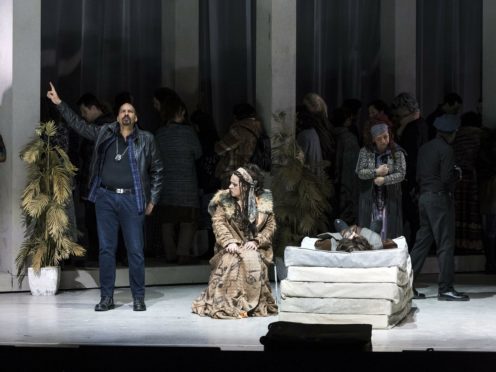The Hungarian State Opera has asked the nearly all-white cast for its production of Porgy And Bess to self-identify as African American.
The Hungarian performers were asked to sign a statement declaring that “African-American origin and identity is an inseparable part of my identity” and made being in Porgy And Bess “a special joy”, Hungary’s index.hu news site reported.
Hungarian broadcaster ATV reported that 15 of 28 cast members signed the statement.
One man in the State Opera production is from Guinea-Bissau in west Africa and another’s father is from there.
The State Opera’s casting of the seminal folk opera set in the American south ran into trouble with George and Ira Gershwin’s estates.
Marcell Bakonyi and Orsolya Sáfár, our #PorgyandBess 2nd cast at the press conference. #Gershwin #opera #newproduciton #notallblackcast #operabudapest pic.twitter.com/ZW6RnAKFyd
— HungarianStateOpera (@OperaBudapest) January 17, 2018
The brothers and collaborator DuBose Heyward created Porgy And Bess for black performers, and the Gershwin estates say only black performers may appear in it now.
The Hungarian show “is not permitted in its current form and contradicts the work’s staging requirements”, a statement from the rights holders says on the opera’s web site.
Asking cast members to identify as African American appears to be the opera’s way around the dispute.
Opera director Szilvester Okovacs told ATV that since Hungary does not record the race of individuals, he preferred to ask the cast.
“There is no public registry of skin colour in Hungary… and I can’t really say about the cast if it meets or not the requirement, so I’d rather ask them,” Mr Okovacs said.
The State Opera’s Porgy And Bess premiered in January 2018 and is performed in English, with Hungarian and English subtitles.
Seven more performances are planned in 2019.
It moves the setting from Charleston, South Carolina to a refugee camp in an airplane hangar.
A commentary for the classicalhive.com website said it was “not Porgy And Bess”.
“It is their own narrative set to the music of Porgy And Bess. Which is a mess and misses the point completely,” the website said.
